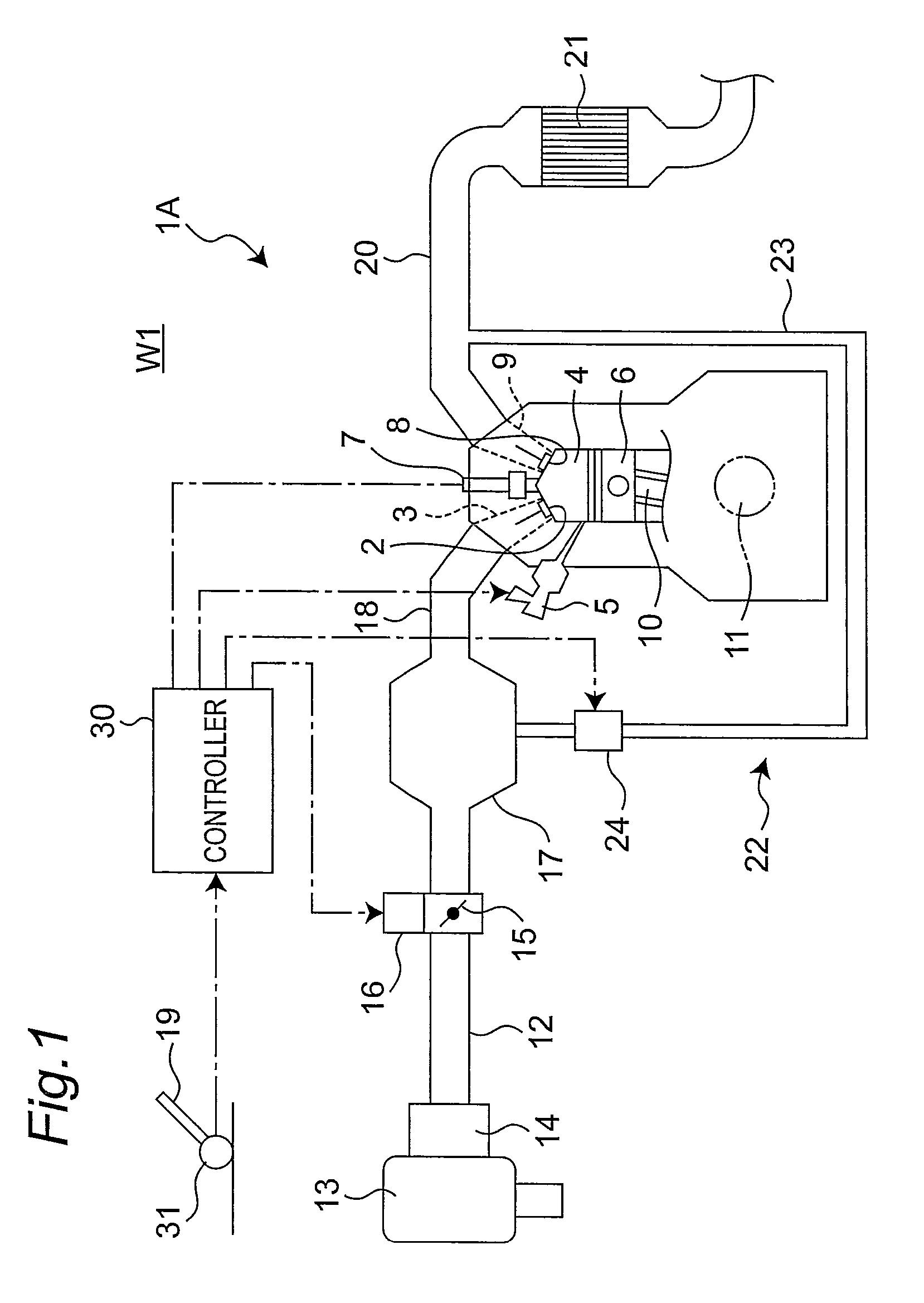Energy-efficient automobile
a technology of energy-efficient automobiles and pulsed control signals, which is applied in the direction of driving parameters, position/direction control, braking systems, etc., can solve the problems of deteriorating energy efficiency, excessive prime mover motor power, and excessive external force, so as to reduce the pulse width of pulsed control signals, enhance the energy efficiency of automobiles, and reduce the effect of pulse width
- Summary
- Abstract
- Description
- Claims
- Application Information
AI Technical Summary
Benefits of technology
Problems solved by technology
Method used
Image
Examples
Embodiment Construction
[0035]With reference to the accompanying drawings, the present invention will now be specifically described based on first to fourth embodiments thereof. The first embodiment relates to an automobile equipped with a spark-ignition engine as a prime mover, and the second embodiment relates to an automobile equipped with a diesel engine as the prime mover. Further, each of the third and fourth embodiments relates to an electric automobile equipped with an electric motor as the prime mover.
[0036](First Embodiment) As shown in FIG. 1, an automobile W1 according to the first embodiment is equipped with a spark-ignition multicylinder engine 1A using gasoline as fuel (only one of a plurality of cylinders is illustrated). In each of the cylinders of the engine 1A, when an intake valve 2 is opened during an intake stroke, air for combustion of fuel (combustion air) is sucked from an intake port 3 into a combustion chamber 4. Subsequently, at a given timing during a compression stroke, fuel i...
PUM
 Login to View More
Login to View More Abstract
Description
Claims
Application Information
 Login to View More
Login to View More - R&D
- Intellectual Property
- Life Sciences
- Materials
- Tech Scout
- Unparalleled Data Quality
- Higher Quality Content
- 60% Fewer Hallucinations
Browse by: Latest US Patents, China's latest patents, Technical Efficacy Thesaurus, Application Domain, Technology Topic, Popular Technical Reports.
© 2025 PatSnap. All rights reserved.Legal|Privacy policy|Modern Slavery Act Transparency Statement|Sitemap|About US| Contact US: help@patsnap.com



